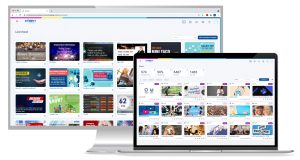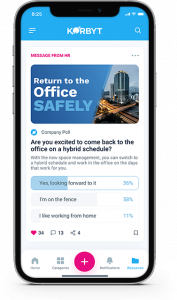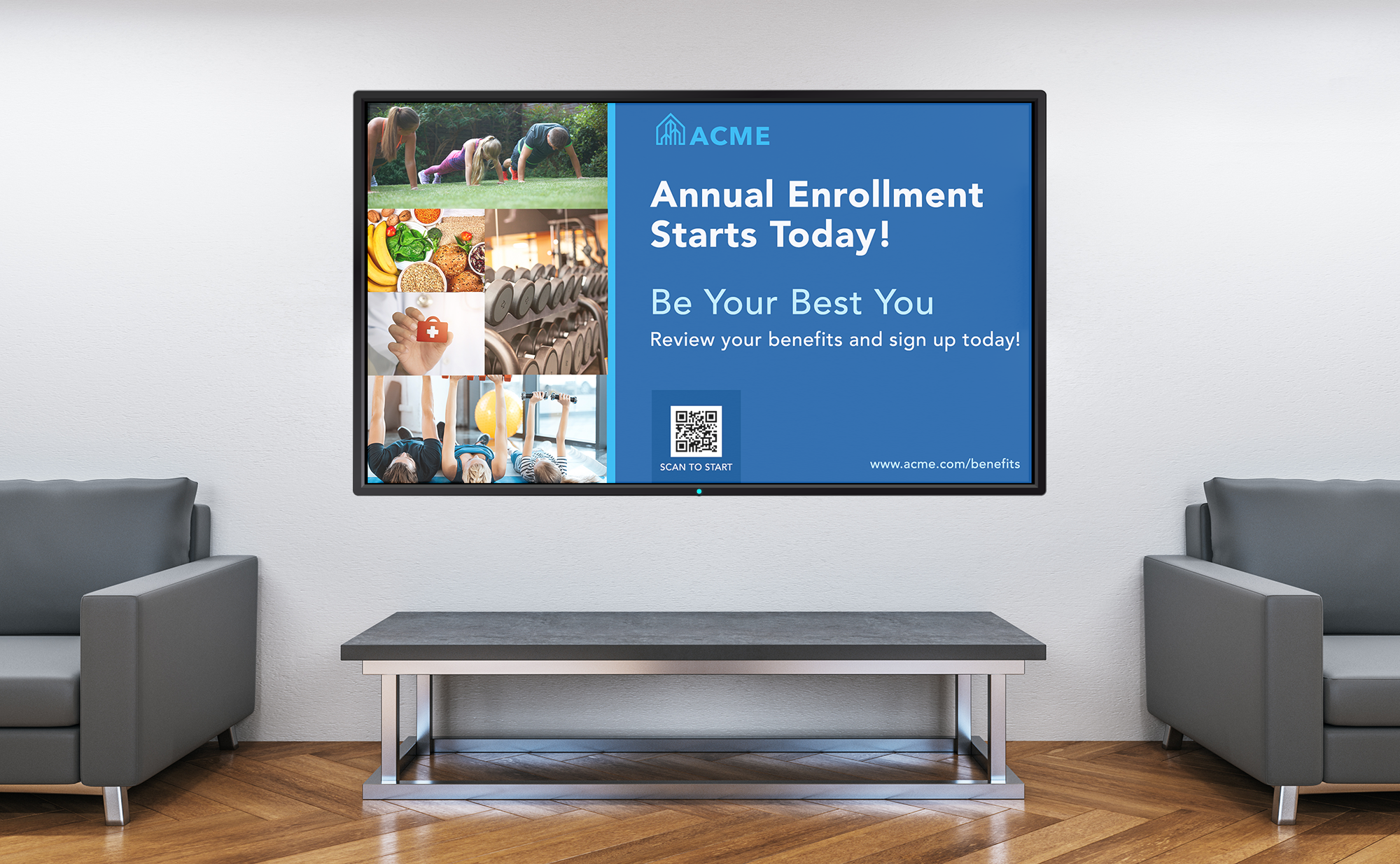How do you really feel about your employee communications?
If you’re totally satisfied and in a good place: congratulations. You’re the exception.
As for the rest? Even as communications professionals carry out employee communication plans based on standard corporate mandates, many will admit to a nagging feeling. How was that town hall received? Did everyone read the CEO’s email? Does anyone in the warehouse watch the announcements on the digital screens? Call it a general…discomfort.
If that’s how you’re feeling…FANTASTIC! Because internal communications play an even more instrumental role in business today, ineffective internal communication can signal big consequence. Morale on the wane. Turnover on the rise. Employees that are miles apart on shared purpose and values. How can you understand the effectiveness of your internal communication strategy if you don’t have the right people, process and technology in place to measure it?

Your discomfort is opportunity. If you’re feeling too comfortable, you are almost certainly missing out on the chance to transform and grow your skills as a communicator to help your company get the most ROI from measuring employee communications. Think of it as a shift in how you work: you can use data and the insights it provides you to create more effective internal communications that engage, inform, and inspire.
It’s only when you’re measuring the effectiveness of employee communications that you’ll know if your messaging is being viewed or what engagement actually looks like. What works when it comes to conveying leadership’s message to the team? What’s not working when it comes to building trust? How do you know when to do more of what’s working, or stop doing what’s not working?
If you’re not there yet, no worries: most communicators are not either. But the time for change is now. Traditional communications methods and operations no longer suffice because they don’t rely on modern technology. Marketers have made the transformation from non-digital to digital and can now measure everything they do. The same is true for communication professionals. Let’s get measuring internal comms…
Internal Communications – Reaching for Meaningful Connections

In communications, “reach” is typically defined as the audience. How many of your employees have received your message? But when it comes to measurement you want more than delivery. It’s well and good to know that content flashed across digital signage, or that email made it into an in box. But what happened next? Was that email opened? Or was it ignored? When you can offer employees channels and devices that align with their preferences, your internal comms will be received and consumed in personalized ways — and therefore more likely to achieve reach and engagement.
Despite articles that assure that email has had its day, it remains a dominant force in internal communication. But on its own, there’s no arguing that it can be noisy and overwhelming to keep up with. Deliver it via a workplace experience platform, though, and these are now internal communications that can be targeted, tracked — and properly measured in context of your overall engagement strategy.
The same platform can also help to integrate internal communications with Single Sign On authentication, providing a level of security that IT will applaud — and employees will engage with more, thanks to minimal hassle. The data and analytics that follow can confirm you’re reaching all your employees in the way they want to be reached.
These numbers can be a powerful form of validation that your internal communications team can bring to leadership as measurable evidence of goals being met. Your workforce communications platform will provide not only the analytics, but also compelling data visualizations to demonstrate success or areas for improvement. In terms of engagement, that’s an opportunity to engage the C-Level’s competitive spirt, in establishing the next benchmarks to beat.
Congratulations on Your Employee Engagement

In general, the traditional sense of employee engagement revolves around sentiment and satisfaction. While those remain key outputs of your communication, it’s the individual digital activities that provide the opportunity for true measurement and understanding. Open rates, views, click through rates, likes, comments, shares, bookmarks — these points of interaction are the definition of modern day “engagement.”
You sent them an email with a link. Did they click on it? Your latest training video was spotlighted in the news feed of the company’s mobile app. Did employees view it? Measurement of internal communications metrics activities can take into account the day and time of that click, view or listen for different demographics across the company — role, age, seniority, location — providing valuable insight on the best when to deliver for maximum interaction.
Internal communications served up through a company’s modern intranet and mobile app can help to measure KPIs related to readership, participation, bookmarks — and social metrics such as likes, shares, and comments. Measuring internal communications and encouraging which team members repost company content on social media can serve as a good testing ground for learning which employees are happy and engaged at work. Actively engaged employees are happier in their work, feel more respected for their contribution, respect their managers and co-workers more — and are more dedicated to your company.
Now that you’re measuring the facts of your employees’ engagement — it’s time to analyze the data related to the specific content that has their attention.
There’s No Content Without Strategy

What’s the goal of your employee communications? Is it to inform, align, or improve productivity? Maybe it’s to ensure the safety of your employees? Or is to drive the culture of engagement that is part of your company’s mission?
Every piece of content sent out and every internal communication published should have a goal and a desired engagement-related outcome. Some content is designed to achieve views, to be certain that every targeted employee saw it. Other content is designed for deeper engagement: the click to watch a video, a comment to start a conversation, or a share to promote thought leadership with personal and professional networks.
Knowing what you seek to achieve is critical. This will ensure that you are creating communications content that is strategically aligned with accomplishing those goals. With a clear content strategy, you can create engaging content aligned to the metrics you can use to measure how well you’re achieving your goals.
Let’s say you discover employees aren’t viewing your article about a particular topic. The analytics tell you enough people saw it, but their session time was low. Perhaps the content wasn’t well written?
Or maybe not enough people viewed it. In that case the content may be fine, but the headline and image you used to capture their attention wasn’t effective. How do you improve for the next wave? Go with your gut and schedule a standard follow-up round?
Take a look at your metrics instead. Use your analytics to learn, then you can modify the content or your approach to achieve your goal. In the example here, the numbers will tell you that this group isn’t reading your messages because they would rather watch a video. Then your workplace experience platform can retarget that communication to now include video content, aligning with the data-based behavior of those employees — and helping you to achieve the engagement you’re after.
From there you might optimize your content strategy to create retained users by transforming written content into a series of short videos. Thanks to the intelligent content management system in your workplace experience platform, this new, improved content can then be targeted and tracked for views by department, team and location. Comparing results with the previous version of content is a data-driven plan for continuous improvement in terms of reach and employee engagement.
The Superpower of Surveys

When it comes to data collection, surveys come up as a common question. Of course, too many wrong questions can lead to survey fatigue among the workforce. On the other hand, good questions and targeted surveys segmented by title, job, and geography can provide in-depth analytics and clear actions.
Surveys can be especially useful in determining metrics that are tough to assess through technology alone — such as sentiment. An example here might be regular video content, such as those kitchen counter update videos your CEO started running during the pandemic. If 45% of your employees abandon a video midway through, a well-structured survey can reveal why employees stopped watching. Learning what employees expect from content can help improve viewership and participation in the next wave.
This extends particularly to those employees who aren’t part of your digital communications. Consider warehouse workers, who typically lack a corporate email or a company mobile app on their personal device. Is the digital signage you’ve set up to reach them in the right location? Is the content being shown meaningful and relevant? Poll them on kiosks in the break area, or with a QR code that sends a text survey to their phone. When it comes to collecting good data, even paper surveys are still valid when it comes to measuring the best ways to enhance employee communications.
Tell Yourself a Good Story

By now it should be clear that data is the key to your employee communications’ strategy and content. But multiple data points scattered across separate departments, platforms, and channels can soon amount to noise. The goal isn’t “just” data and functional targeting, but to uncover and understand the story it holds within. Learn what your people want and need. This is the heart of your business — and the business of modern professional communications. “What gets measured gets improved.”
This is where a consolidated workplace experience platform makes the difference. A strong technology partner will help educate not just how to use a platform, but how it can tie your goals and metrics together. Seeing all your communication KPIs in one dashboard visualizes your communication data into modern displays that can be quickly understood, shared, and turned into action.
An action plan based on meaningful data will reap meaningful results:
- Effective content & channels: Measuring communication KPIs will identify the formats, information and knowledge that employees want and respond to — and save you from putting time and resources against content that will be ignored.
- Overall engagement: Employee engagement with internal communication can be an indicator for levels of engagement across different parts of the company.
- Increased productivity: Engaged employees communicate more effectively and are more likely to reach your company’s goals.
Measuring internal communication makes internal comms better. More relevant content for employees. More attention from the C-Suite. More opportunity for your communications’ department — and you as a communications professional.
How’s that discomfort level feeling now? Don’t get comfortable quite yet. The data is out there: get measuring.









